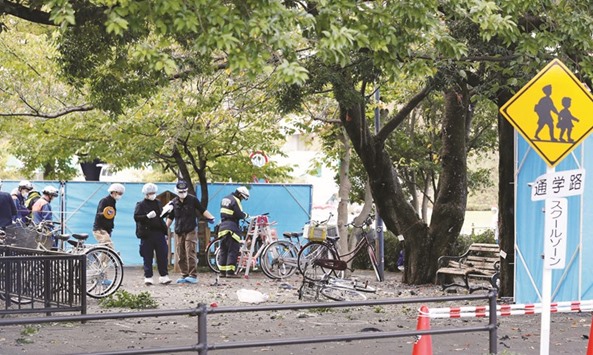A festival was under way at the park when the 72-year-old former member of Japan’s Self Defense Forces apparently set off an explosive device that killed him and left three people injured, including two seriously, Kyodo News reported, citing police.
“One person was found dead,” a local fire department spokesman told AFP without elaborating.
Around noon police found pensioner Toshikatsu Kurihara at the park in the city of Utsunomiya, some 100km (60 miles) north of Tokyo, after receiving a call about a person engulfed in flames following what sounded like a blast, reports said.
Police suspect that Kurihara killed himself and a suicide note with his name on it was found inside a sock he was wearing, Kyodo said.
“I pay with my life,” the note reportedly said, expressing concerns about family issues.
A 64-and 58-year-old man were seriously injured in the blast while a 14-year-old junior high school student was left with minor injuries.
Several cars, including Kurihara’s, were found burning in a nearby parking lot around 11.30am local time (0230 GMT), following reports of blasts there.
No one was injured in those explosions, Kyodo said.
One man told public broadcaster NHK that he “smelled gunpowder in the area” after the explosions.
The festival was called off following the blasts, the paper added.
Meanwhile, Kurihara’s house in the city, where he reportedly lived alone, was burnt to the ground yesterday morning.
Explosions of this kind are rare in Japan, although small pipe bomb blasts linked to extreme leftists occasionally hit near US military bases.
In November last year a homemade pipe bomb exploded at a controversial Tokyo war shrine, damaging the toilets at the facility.
No one was hurt.
A South Korean man was later arrested and sentenced to four years in prison after admitting detonating the bomb at the Yasukuni shrine.
It has been targeted by activists who see it as a symbol of Japan’s militaristic World War II past.



